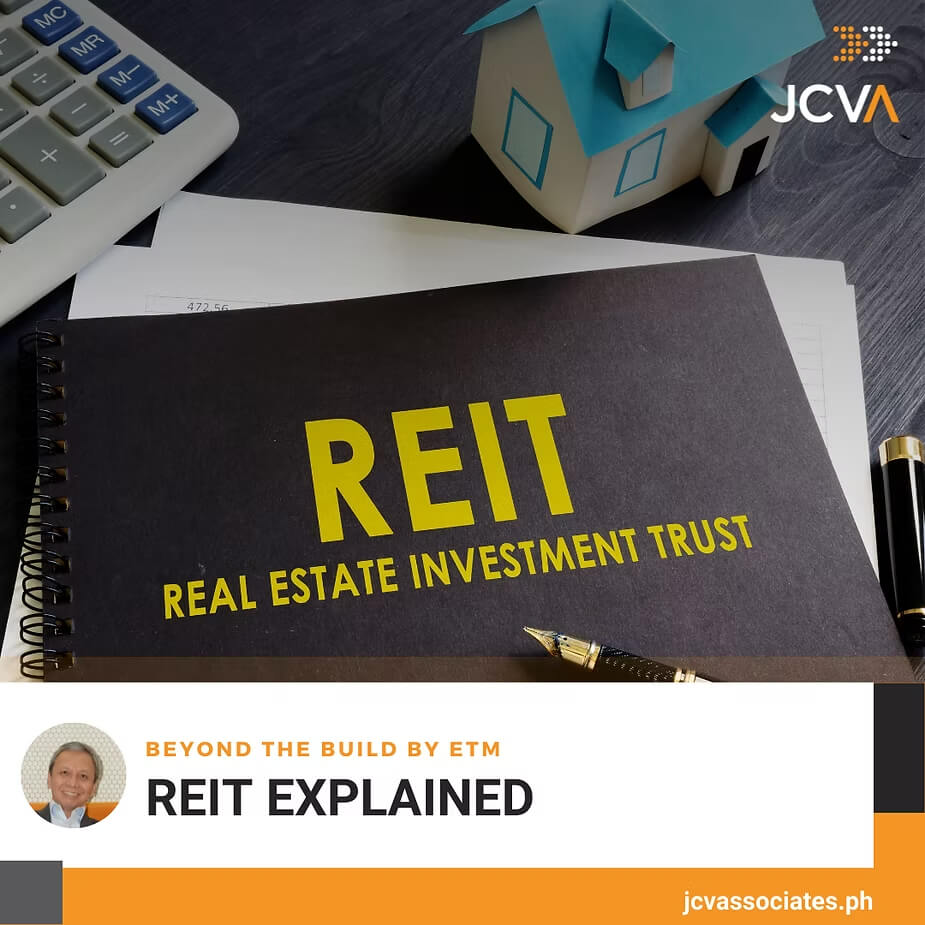
Real Estate Investment Trust (or REIT) involves the monetization of real estate assets that generate recurring income by way of rent, toll fees, etc. into tradable securities or shares sold to the investing public (institutional or retail). It is similar to an Initial Public Offering (or IPO) but distinctly different from the usual IPO involving other asset types or businesses in that REIT assets are real estate by type, requiring a public float of at least 33 1/3 of its outstanding shares, the earnings are mandated to be paid out as dividends a total of at least 90 percent to its shareholders, with the dividends paid being a tax-deductible outflow to the REIT entity.
Furthermore, the REIT entity is required to reinvest proceeds of primary shares sold to the public and its sponsors from secondary sale within a period of one (1) year to similar class of assets (i.e., earning real estate assets located in the country).This particular provision was a critical amendment made to ensure that proceeds are not repatriated or invested in assets outside of the country. In addition, the tax-free exchange of assets to the REIT company by sponsors and the lowering of the public float to 33 1/3% from 66 1/3% were the key amendments made on the law that was passed in 2009 but which never took off due to resistance of the market to what was thought then as being restrictive provisions of the law.
Other key provisions of the law include the hiring by the REIT company of independent entities providing Property Management and Fund Management work, and the appointment of independent directors in the REIT’s board of directors.
Examples and type of assets that qualifies for transfer or contribution to a REIT entity include rental apartments, commercial (or office) buildings, hotels, retail malls, elderly care rental facilities, infrastructure projects (i.e., toll highways, railways, airports, etc.), warehouses, and other properties that derived rental income on a medium- to long-term horizon. A recent listing even includes a land lease arrangement between the land owner (the REIT entity) and a renewal energy company where the revenue structure includes a fixed rent on the land (the energy company is leasing) and a percentage share of the revenues of the energy company.
The objective of the law as intended are: (1) the development of the capital market (this is achieved thru the additional listing of REIT entities in the stock market as a result of the incentives provided by the law.) and as a source of financing for infrastructure projects; (2) broaden (democratize) the ownership base of real estate assets, and; (3) protect the investing public.
By far and based on the listings concluded, it does appear that the REIT law is achieving its objectives. However, the real benefit would appear bias in favor of the sponsors, the major real estate conglomerates who have taken sizeable portions of their existing assets to REIT, as the same REIT entities will be paying less income tax prior to the transfer. This is so since dividends paid out (at least 90% of the REIT entity’s distributable income) is a tax-deductible item to the REIT entity. We yet have to see though proponents in the infrastructure business accessing the REIT as a source of funding for more investments in similar class of assets.
In terms of democratizing ownership, this is embedded in the law requiring “at least one thousand (1,000) Public Shareholders each owning at least fifty (50) shares of any class of shares, and who, in aggregate, own at least one-third (1/3) of the outstanding capital stock of the REIT.” So that’s a given.
On the public protection side, some amendments were allowed where ownership of the Fund Manager (FM) and Property Manager (PM) are partly owned by the REIT entity or by the sponsors but with the majority of its board members being required to be independent directors. While this would appear to be an “arms-length” structure, it is still possible for the REIT entity or the sponsors to dictate its “will” on the FM and the PM, thus lessening somewhat their independence to its prescribed functions and therefore the objective of protecting the investing public.
As in all listed shares/companies, the attractiveness to invest in REIT shares depend on the potential yield the investing market perceives it will generate, i.e., dividends declared versus the acquisition cost of the shares. In turn, the dividend yield of REIT entities is a function of the quality of the assets and its location, occupancy level, lease rates it charges its tenants, the quality of its tenants, and the average rent rolls (i.e., average duration of lease terms to expiry of current tenants, where a longer rent roll is deemed more attractive), among others.
REITs compete with other investment instruments available in the market such as shares of other listed REITs and public companies, government IOUs, private bonds, etc. Therefore, in times where yield in less risky instruments like government IOUs are higher (like today), the attractiveness of REIT shares is diminished. But the prospect is positive for more REIT listings once inflation stabilizes giving the Banko Sentral ng Pilipinas (BSP) reasons to taper down its policy rates.
We manage risks, build strong stakeholder relationships, and deliver solutions that reflect global best practices, backed by deep local industry knowledge.
If you're looking for a reliable partner to bring your vision to life, JCVA is here to build it with you.


